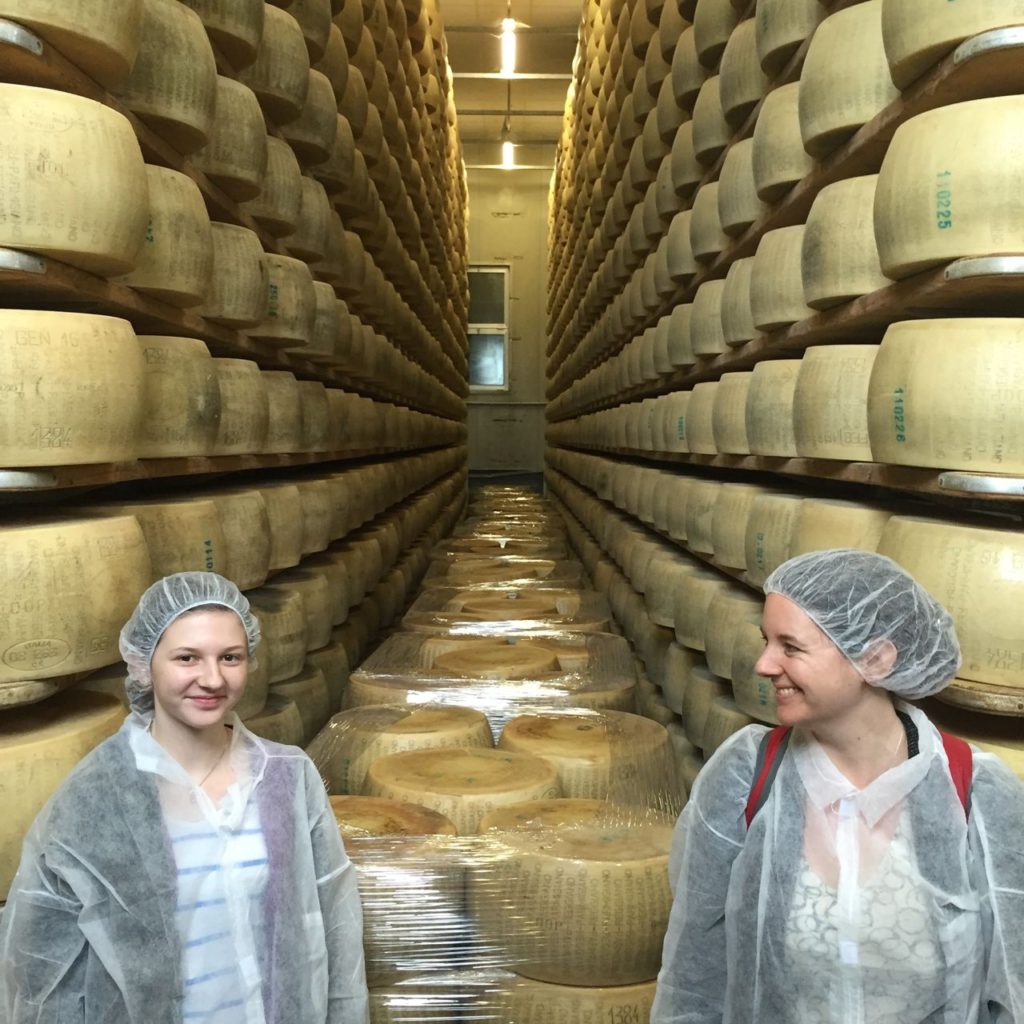
Italy post number 2… and then soon I’ll be making things in the kitchen again. I just want to make sure I remember this one. So…
Sadie wanted a cheese tour. I’m not the tour sort, but of all the possibilities in Italy, this is what she requested: to wander around mostly but one day have a cheese tour. What could I do?
I consulted the great google, and came up with this company. I was wary because it was the first listing (and because I’m wary of all tours), but the great trip advisor had over 1,000 five-star reviews of the tour, each in its own words telling me to just book this now. It was expensive enough to make it by far the most expensive day in Italy, but cheaper than a day at Disneyworld, which Sadie had never asked for. So I went for it.
Before I get into this I’ll ruin any surprises and tell you that if you are anywhere near Bologna you must take this tour. MUST. (Also, if you’re in Bologna- we stayed at the best airbnb I’ve ever stayed at, beautiful, with generous hosts and comfortable beds and a courtyard that holds the echoes of so many people eating and talking in a way you dream about when you think of Italy, at least I do.)
I thought I’d talk you through it, just to give you a taste, in case it takes you a while to get to Bologna. Ready? Let’s start here, on the balcony over the courtyard. Imagine some hastily boiled coffee, a grumpy teenager having to get up way too early, and a sprinting down the stairs to meet a mysterious van that…
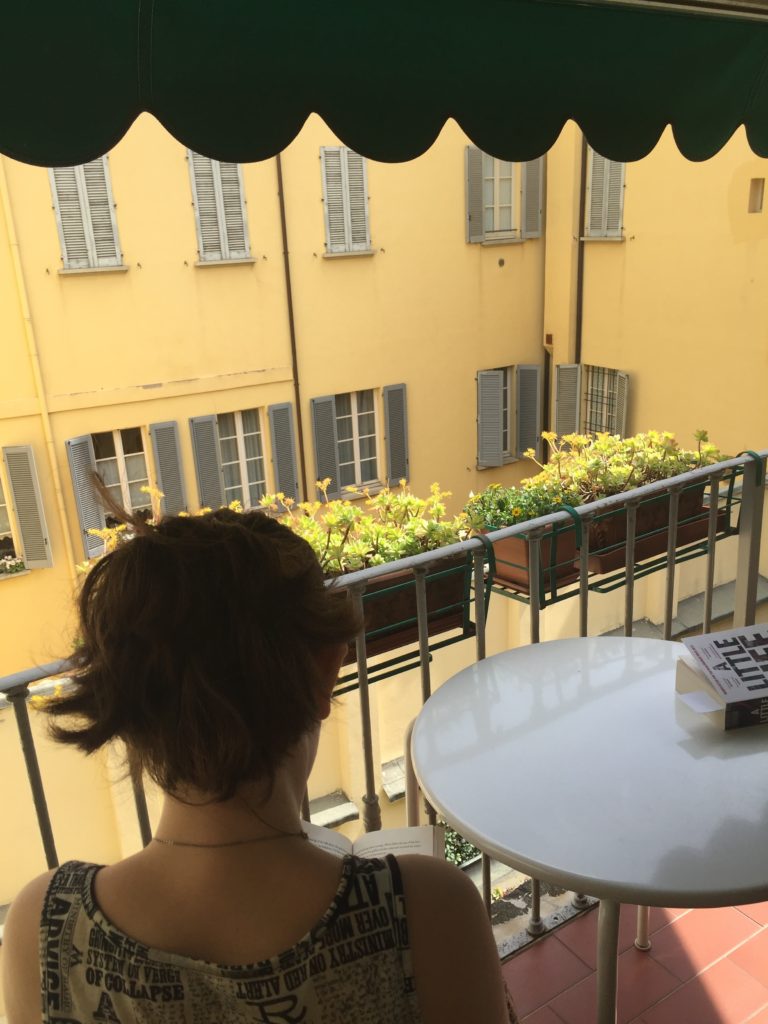
picks us up at 7 am, and then, packed with the sort of people who take food tours, drives outside the city through green, green Italy to the Parmigiano-Reggiano factory in Modena. There we met another van full of people and our tour guide, Alessandro. And then he brought us into the factory.
All Parmigiano-Reggiano is made in the Emilia-Romagna region of Italy. There are 325 factories, and each is closely watched and regulated. There are six people working here, and they work seven days a week. At 5 am they receive the unpasteurized milk for the day. They culture it with a bit of yesterday’s whey, and the cheese making begins. This is Alessandro:
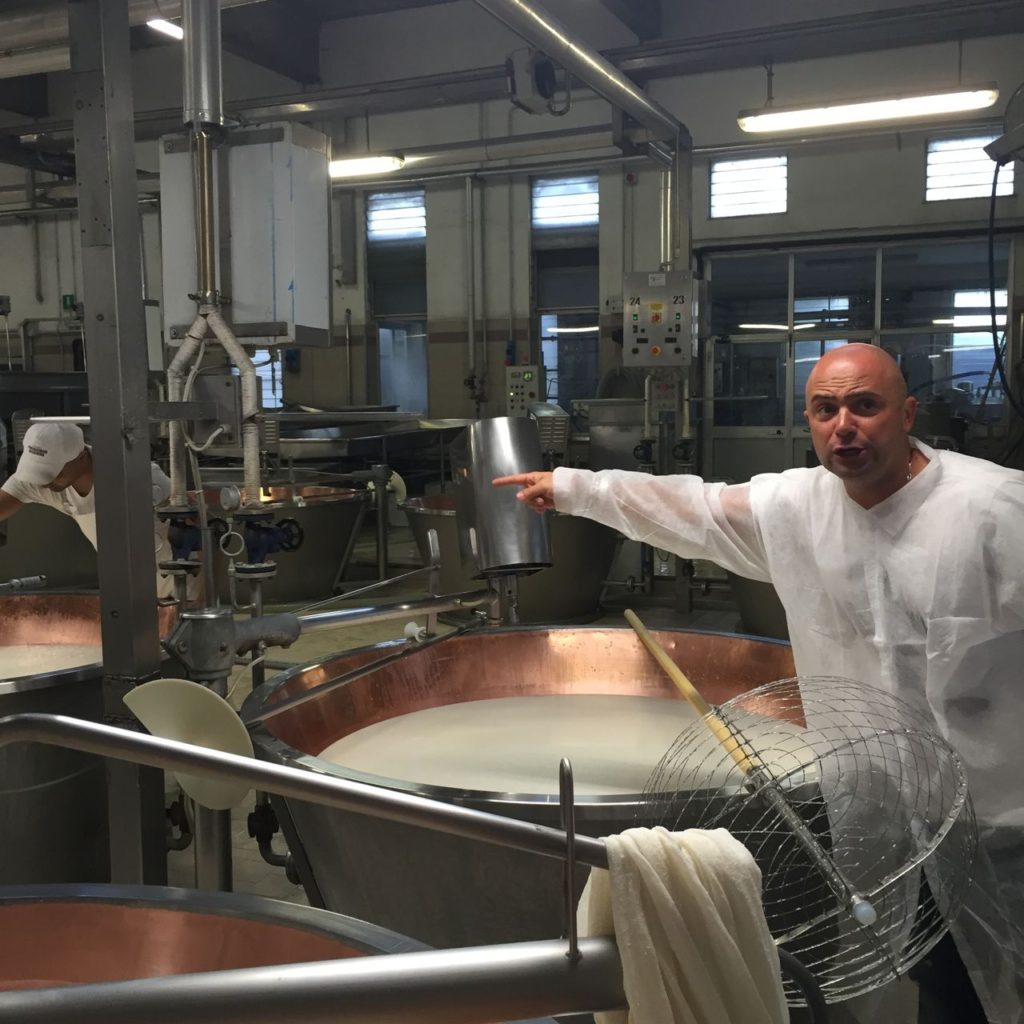
Everything happens in this room in these deep copper vats. The cheese is made by hand, felt by hand, and watched constantly. There is one master cheese maker, and he’s making the final decisions about each vat of milk.
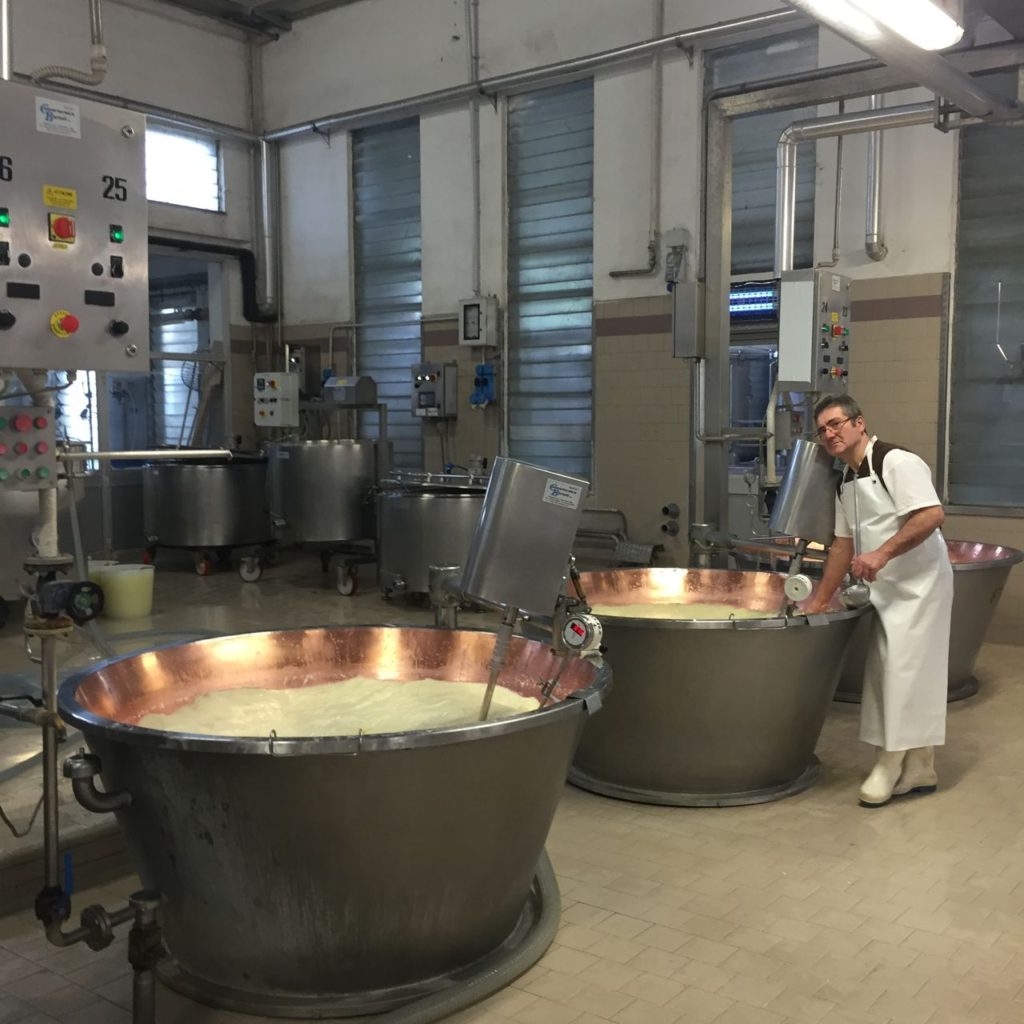
After the whey goes in, they add the rennet to firm up the curd. Then, the curd is broken up by hand.
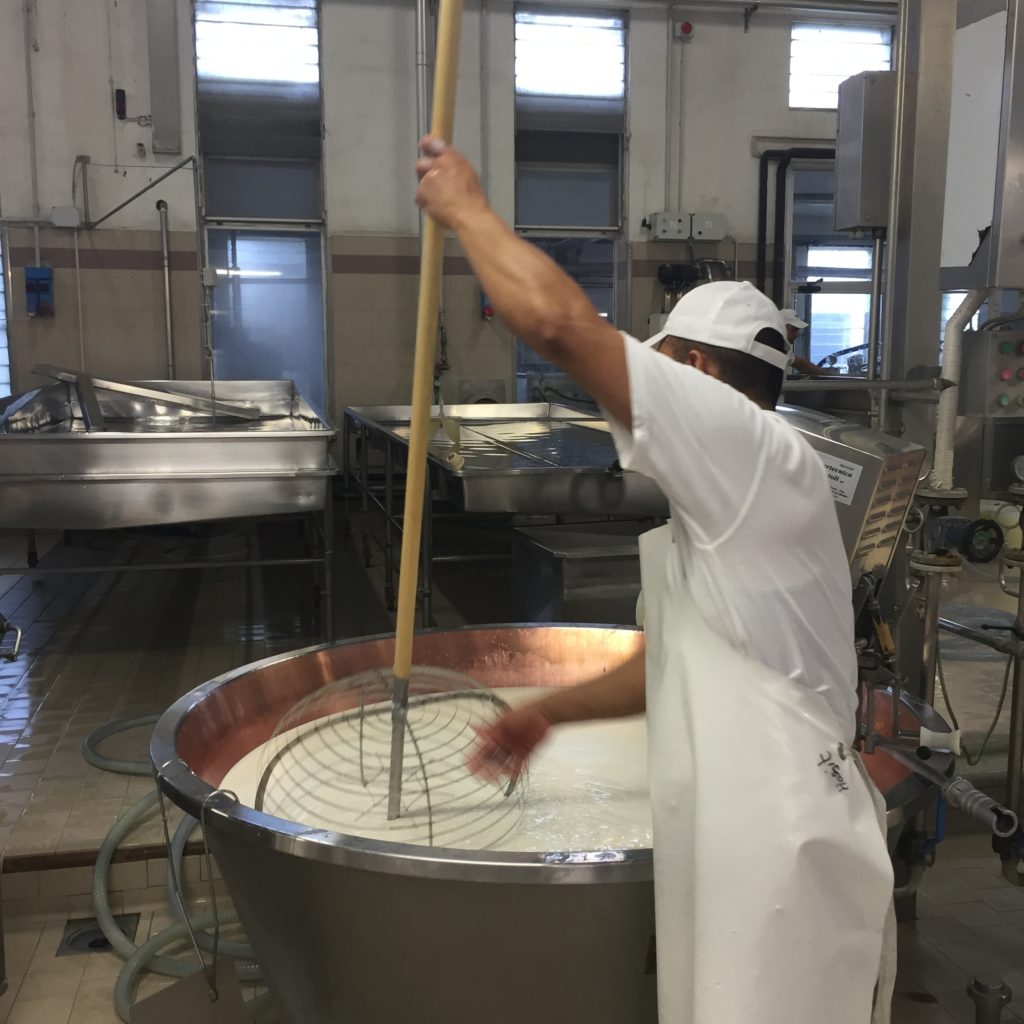
The curd gathers and comes together in the bottom of the vat, and then two cheese makers bring the fresh cheese to the surface. This curd is cut in half (by feel and eye, not weight!) and will end up getting molded into two rounds of Parmigiano-Reggiano.
.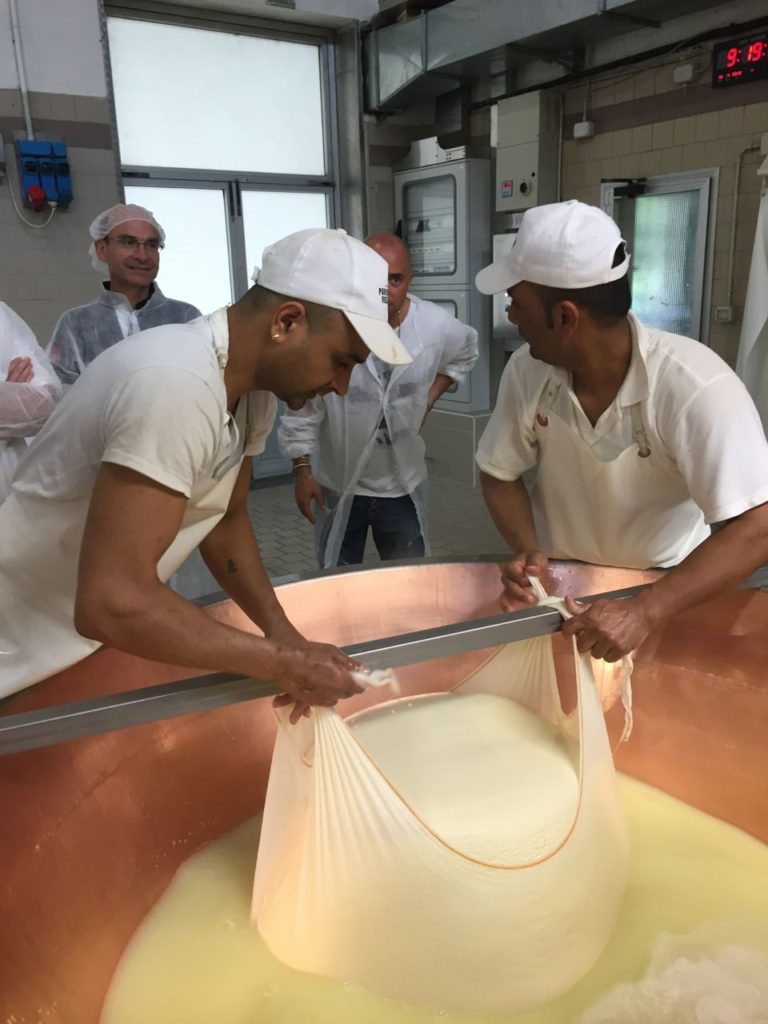
The curd goes into the next room and is shaped and molded into the shape we know best.
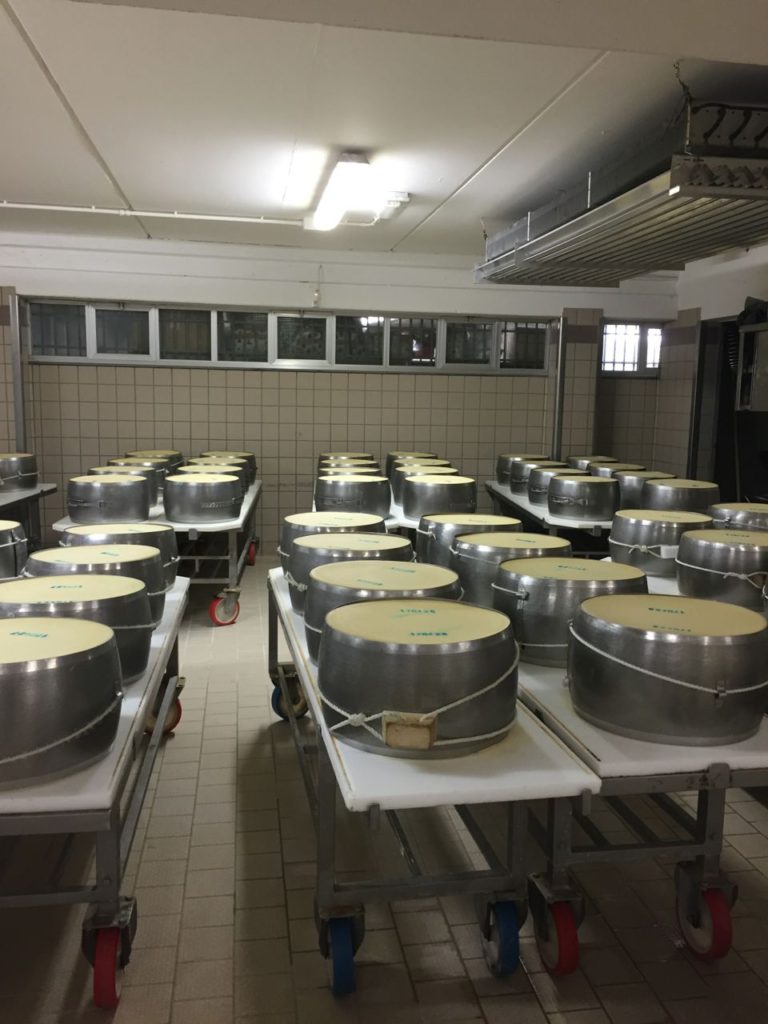
At this point, it’s imprinted with all the details that tell us what it is: bound to be real Parmigiano-Reggiano, made at this factory, on this specific date.
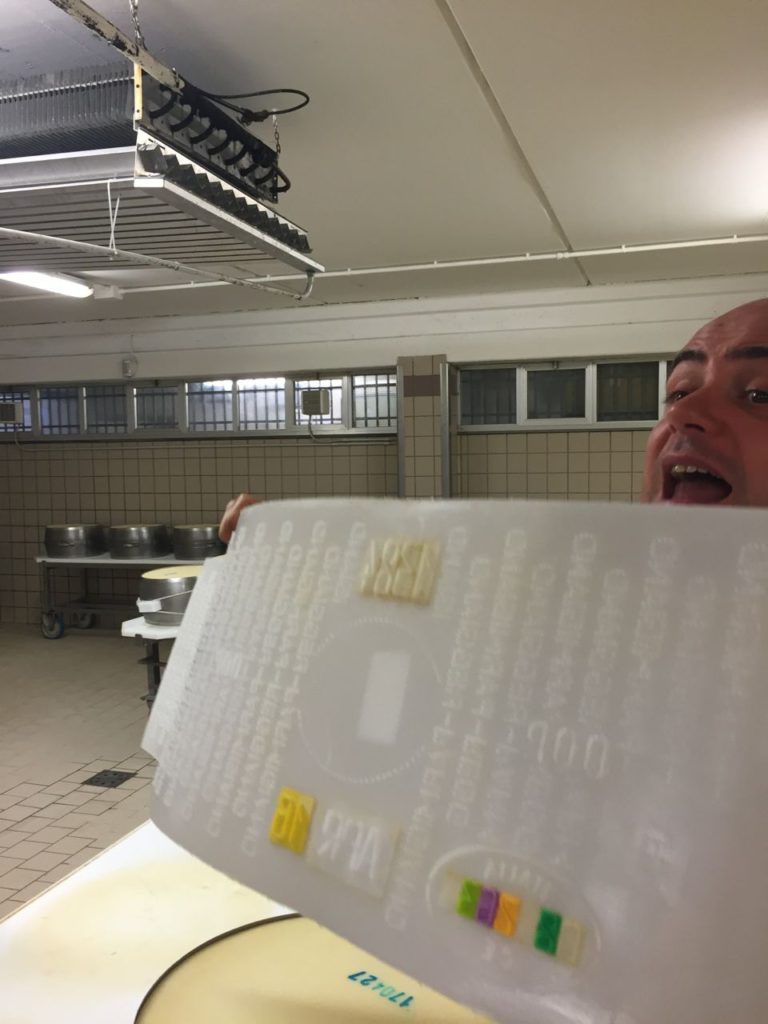
After its stop in this room (for about 1 week, I think- although my notes were less complete than I wish), the cheese gets packed up into racks and soaked in salt water for about 2 weeks (again, my apologies on the exact time details).
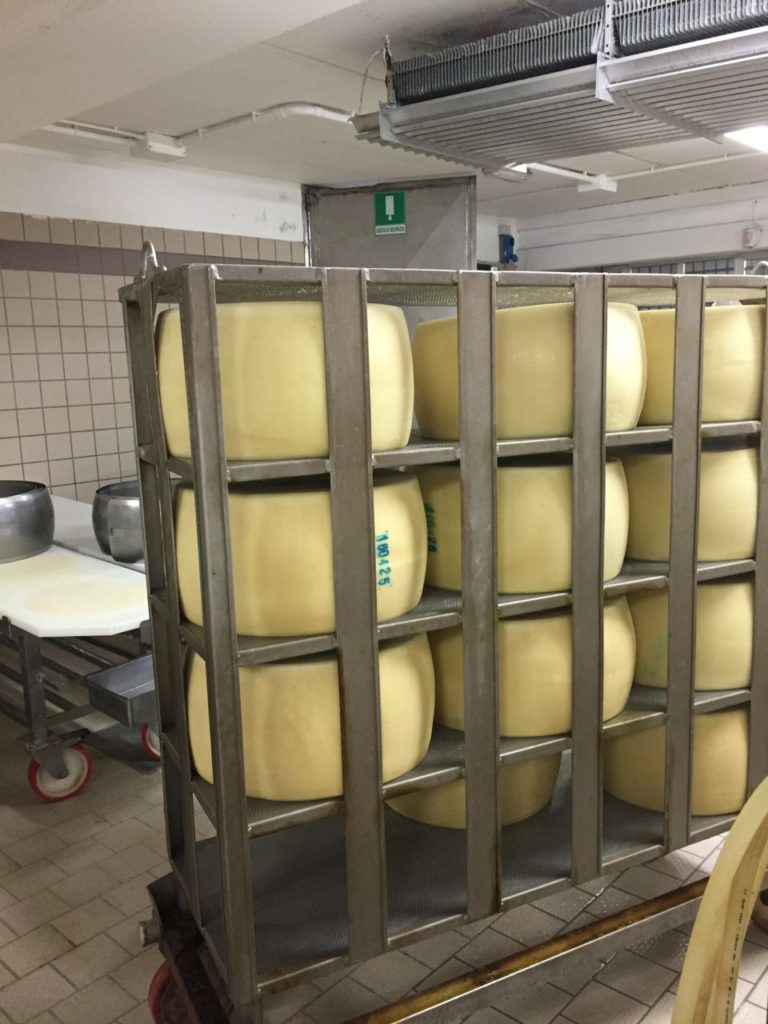
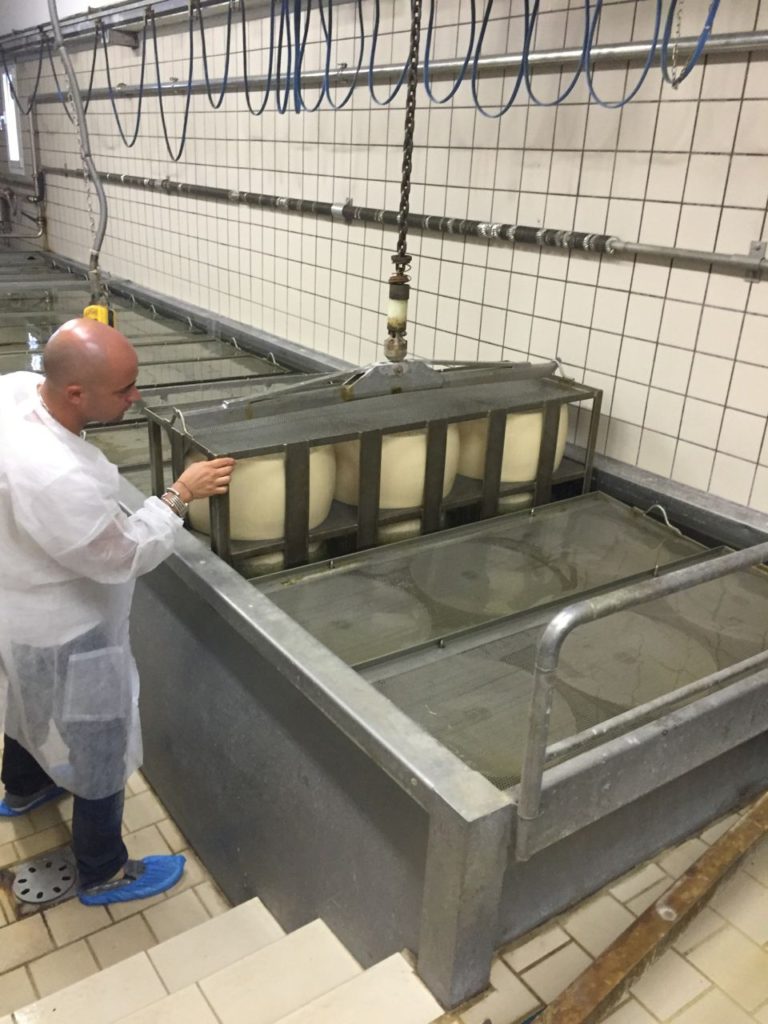
From here the cheese goes in to the next room to age.
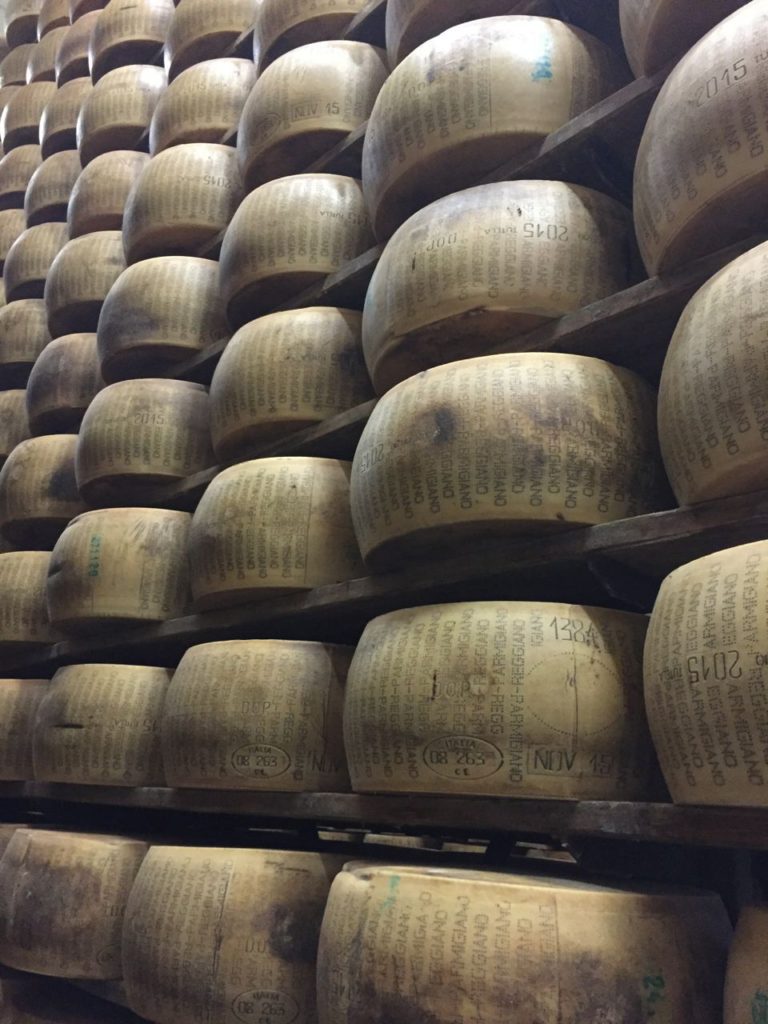
Each round is regularly turned by hand. All Parmigiano-Reggiano is aged a minimum of 12 months, but it can be up to 3 years. And at the end of the aging, it’s tested carefully by external agents from the D.O.P. who tap it with a hammer to make sure there are no air bubbles. Cheese that passes the test is proclaimed Parmigiano-Regianno. If there are any imperfections but the cheese is still useable, the cheese is pulled out of the aging process and sold as “Mezzano”, or seconds. This is less aged and a bit sweeter.
Every step of the process relies on human touch, feel, smell, and sight. The cheese is made in the same way (and with the same result) as it has been for nine hundred years. And the checks and balances to the quality are built right into the way the cheese is made. If there are imperfections or antibiotics in the milk (this is closely monitored and regulated, but sometimes they make it in on the sly), the cheese swells in the aging process, eventually exploding. This especially struck me, as it impacted the way I think about food quality and regulations. If the milk isn’t up to par, the cheese just doesn’t work.
Alessandro talked a mile a minute, sharing every single detail about the process. And through it all, he kept knocking his fist against his heart, saying:
We always talk about money and quality. But we need to talk about heart. This is what’s in this cheese.
We went outside of the factory for breakfast: cheese and more cheese, salami, pastries, and lambrusco (!). Then it was back in the van and on to Balsamic Vinegar.
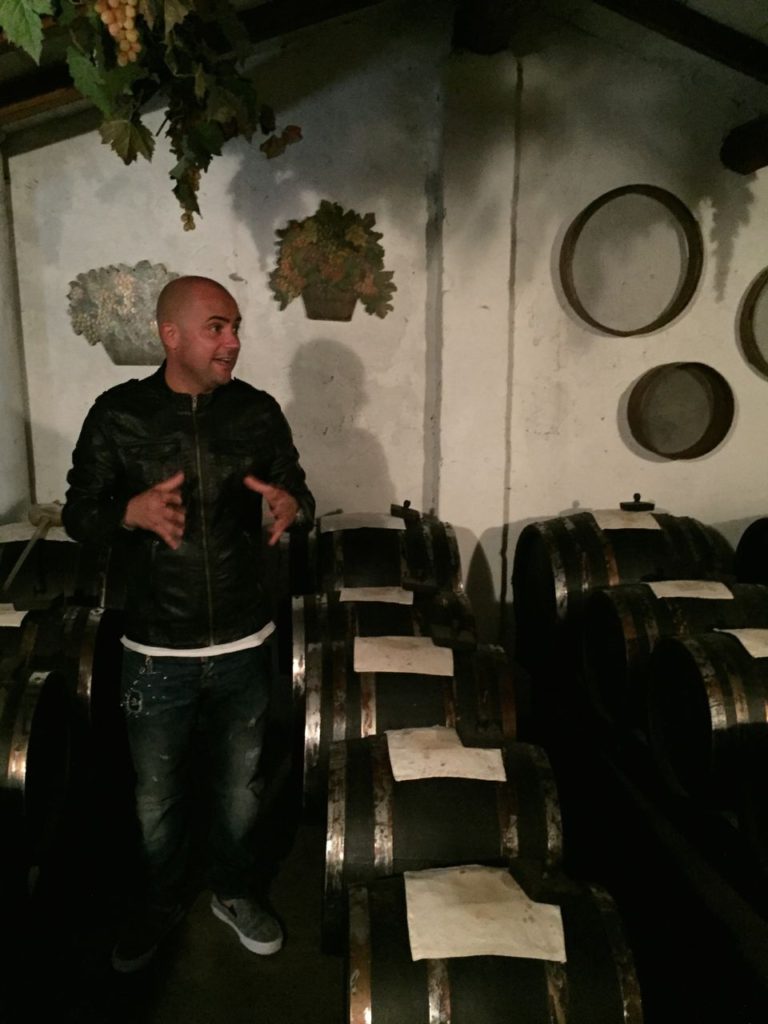
Real D.O.P. certified balsamic vinegar is made of one ingredient: cooked grape juice. It begins with a battery of barrels, and these are passed down through families. Traditionally a new battery is begun with the birth of each child, and that battery, along with the skill of balsamic making, will go with the child when they’re married. This is how it works:
The barrels go from large to small, and each is made with a different kind of wood. The barrels are open at the top (there’s a hole under the white cloths you can see above). The barrels traditionally live in the attic, where they can get nice and hot in the summer and very cold in the winter. The process begins by filling all the barrels with cooked grape juice. After six months, you return to the barrels, and you take a peek to see how much liquid has evaporated from the smallest barrel (usually about 10%). Liquid is siphoned from the next barrel into the smallest, and then that liquid is replaced by the barrel from the one next to it, and so on. Through this process, all the juice gets to spend time in contact with each kind of wood, and it takes on the flavors of that wood before moving on. This process continues for 12 years, and then you can bottle 10% of the vinegar from the smallest barrel. So 12 years of work creates a few precious bottles of real balsamic a year from the 12th year on. And because all the vinegar is constantly shifting from barrel to barrel there’s no way to know how long it’s really aged. This is why true balsamic will never list an actual age on the bottle. We even saw a barrel that was 500 years old, and there may very well be 500 year-old vinegar circulating through that battery.
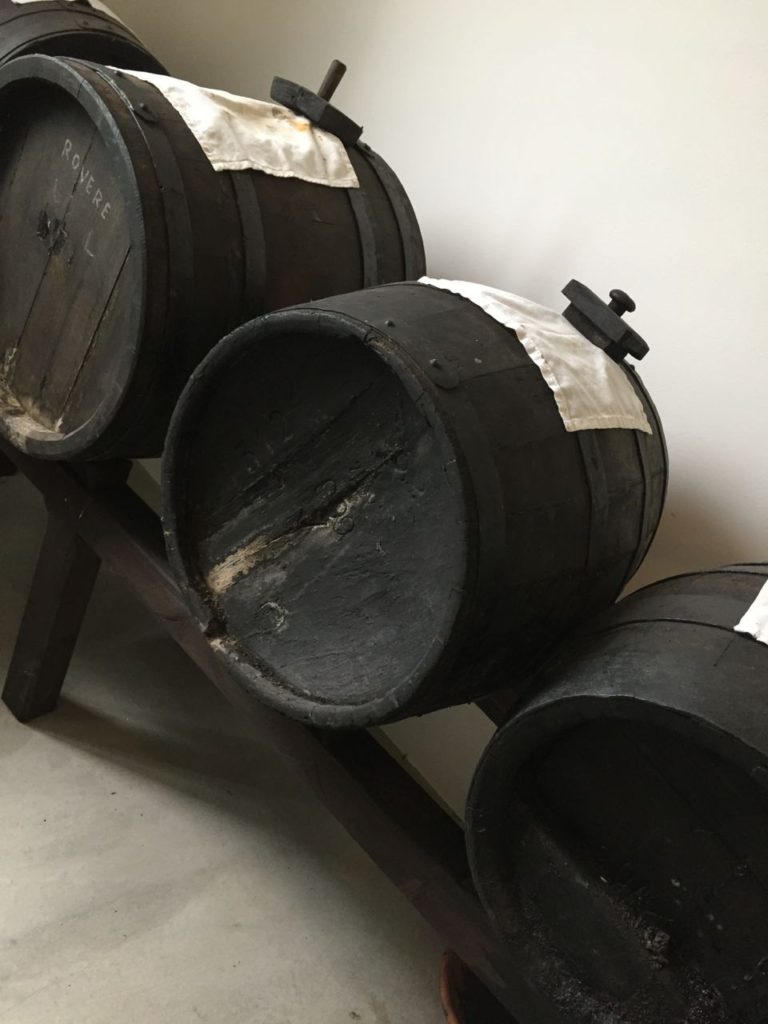
There are many levels of Balsamic. There’s the true stuff that’s just cooked grape juice. It’s aged a minimum of 12 years, and only bottled in 100 ml bottles. This is only to be consumed in drops here and there–on ricotta, strawberries, or ice cream. It’s certified by the D.O.P. (protected destination of origin). It’s much more sweet than it is sour, and the taste of all the woods really does come through. This is a product you’ll find only online or in very fancy food stores, and a bottle anywhere other than on the vineyard will run you upwards of $100.
There’s another kind of balsamic also produced in Italy, and this is certified I.G.P. It’s aged much faster, and includes other ingredients like wine vinegar. When it comes to this stuff, look for a vinegar with cooked grape juice as its first ingredient, and that will be higher quality than if it has wine vinegar as its first ingredient.
The third category is all the other stuff, which often includes caramel and a whole other list of things that are hard to pronounce.
And there’s also another products called balsamic condiment, which is unregulated and made like true balsamic, only aged 6 years. It’s a treat for sure, and it’s syrupy like balsamic.
Of course we got to taste them all.
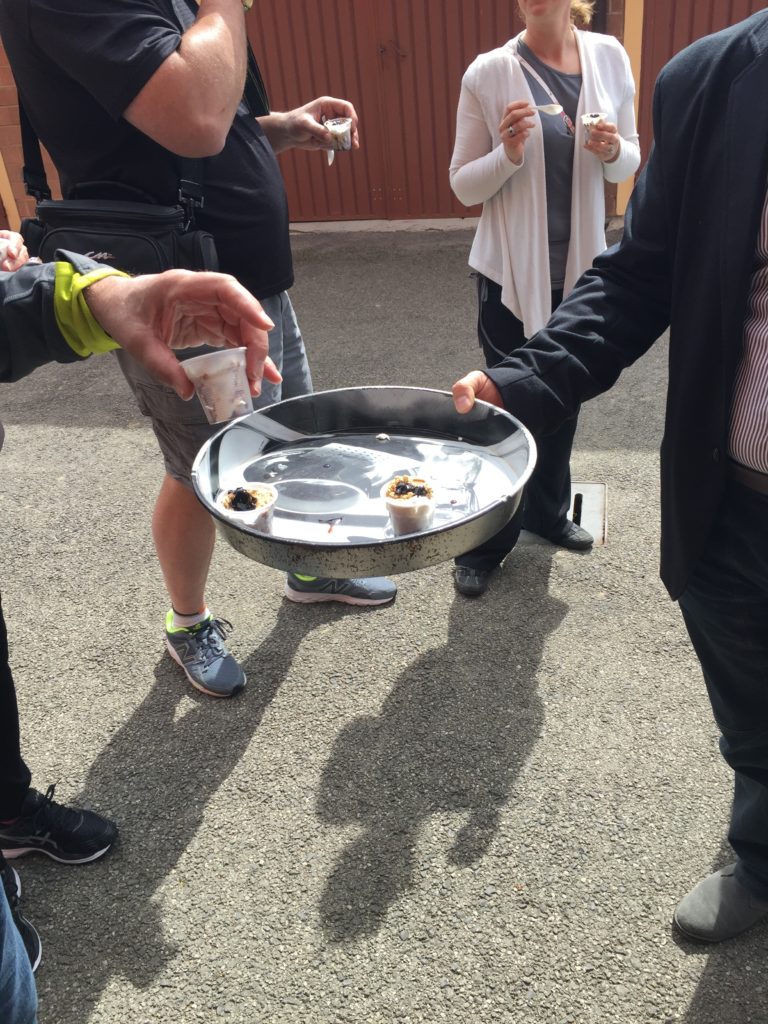
From there it was on to the prosciutto factory. Again, the product that we were learning about was all D.O.P. certified, so this means every leg came from an Italian pig who lived and died well. I’m going to let the photos do the talking on this one, because in a lot of ways it was my favorite stop when it came to visuals.
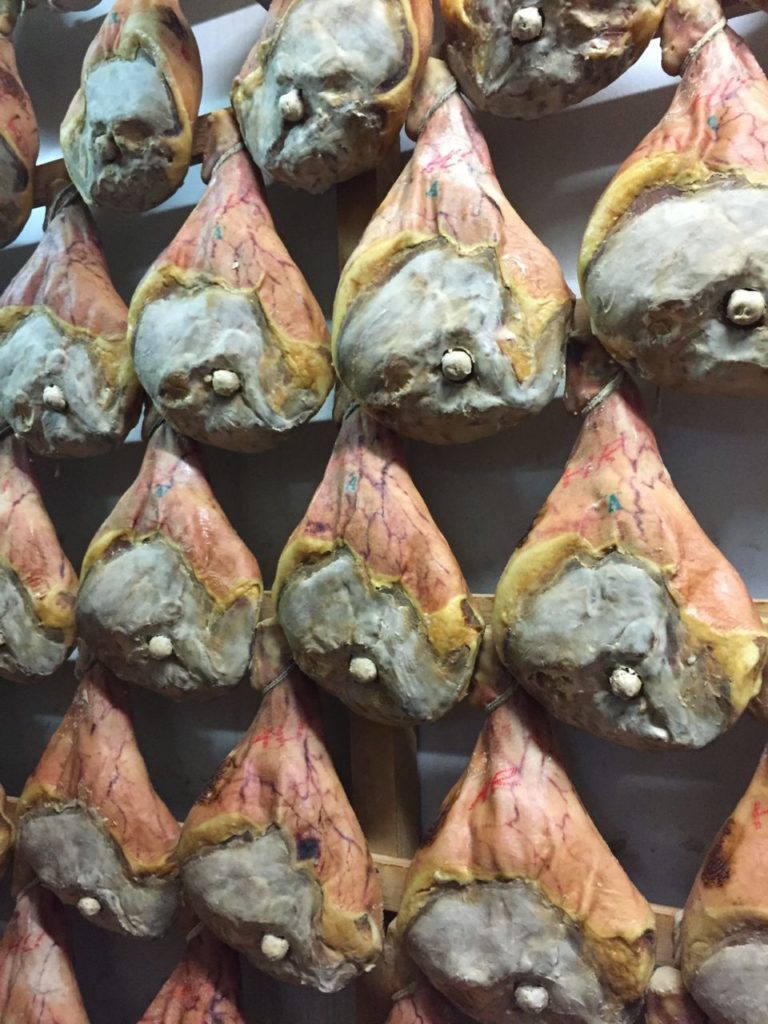
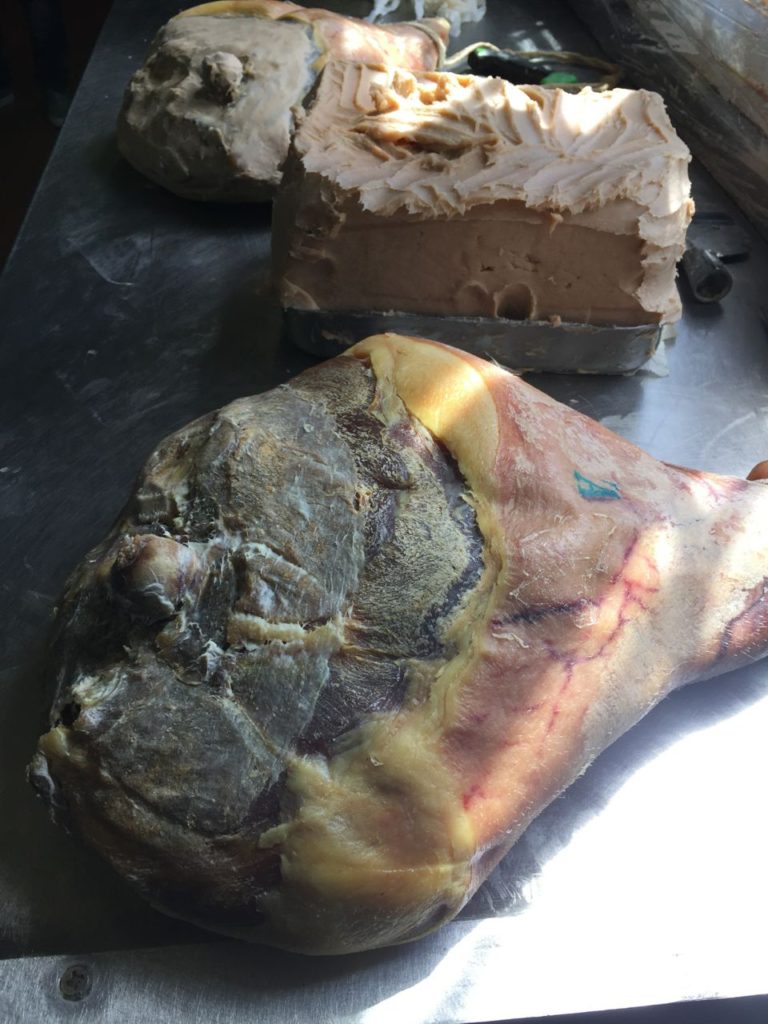
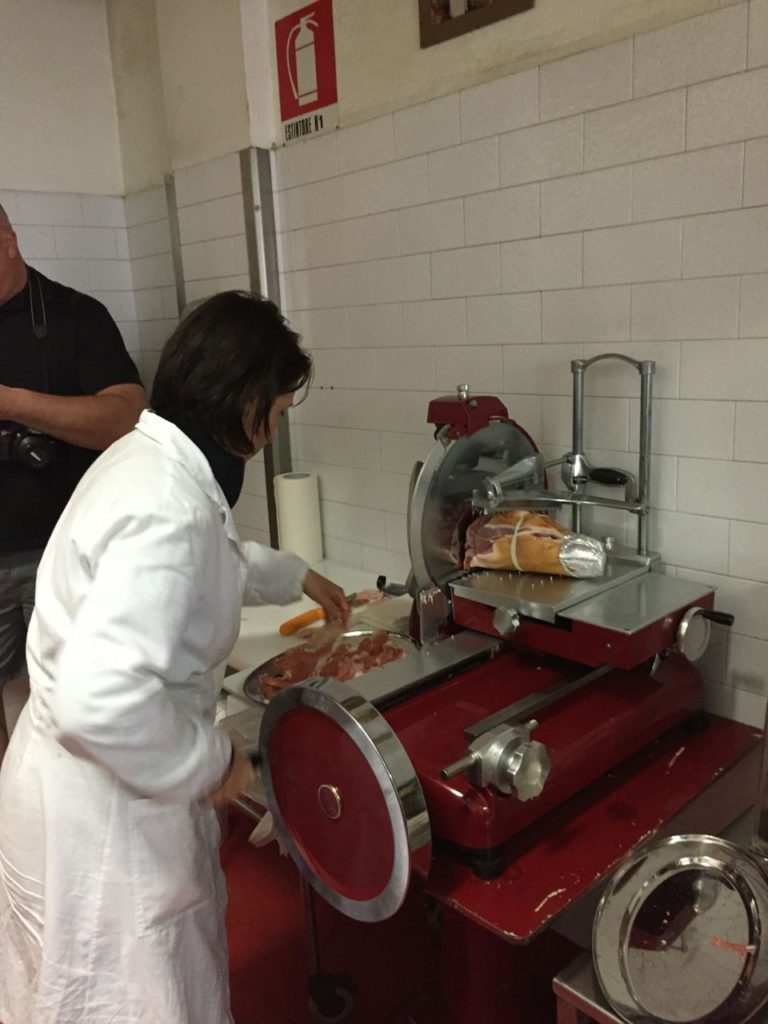
(Sadie ate her weight in prosciutto here.)
Over and over, I was struck by the attention to quality–not the pushing toward quality or the regulating that I see here, but the ways that the processes themselves were built around the quality. These products couldn’t be made any other way. If anyone tried to cut corners, they just simply wouldn’t be creating the same end product. And as Alessandro kept repeating, why would anyone want to cut corners? This is food we’re putting in our bodies.
From here, we hopped back in the van and drove up to Corte d’Aibo, an agritourismo in the hills outside of Bologna. Somehow we found the room in our bellies for a three-hour lunch.
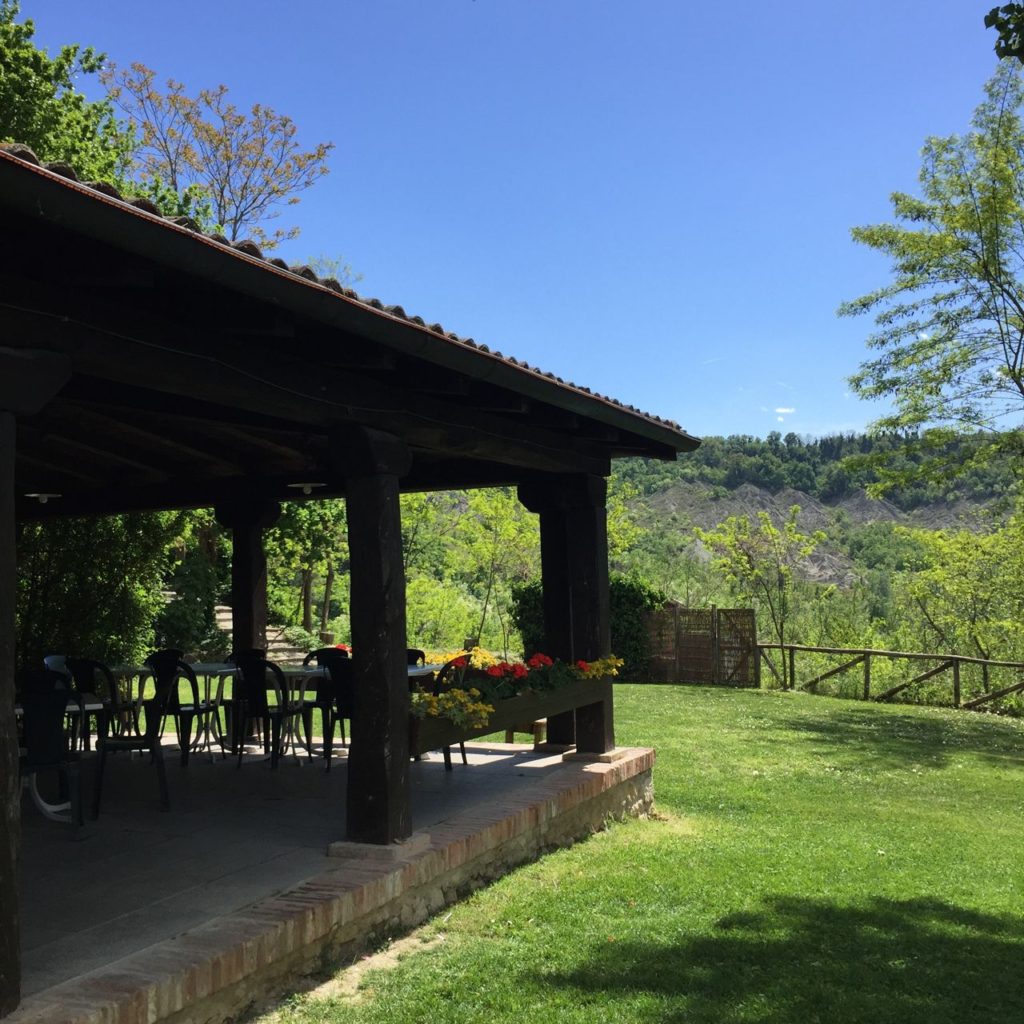
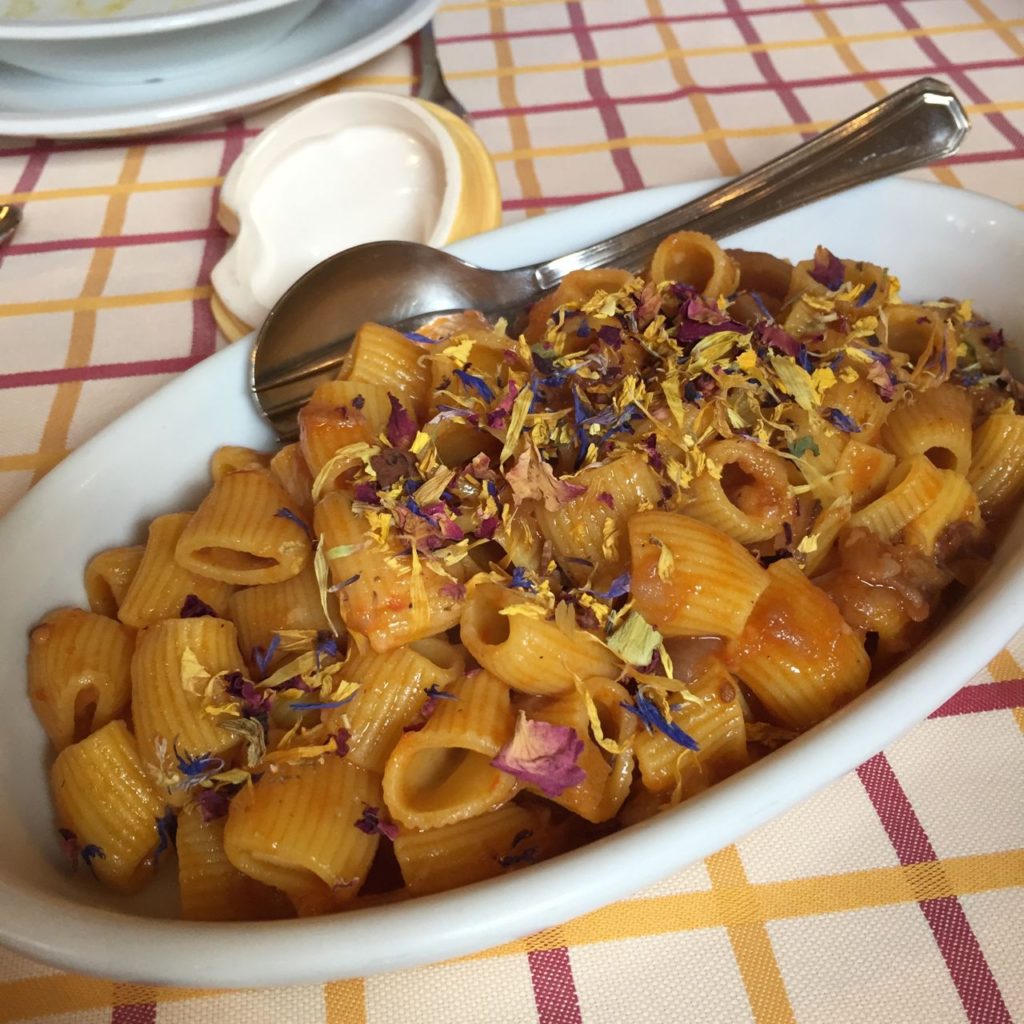
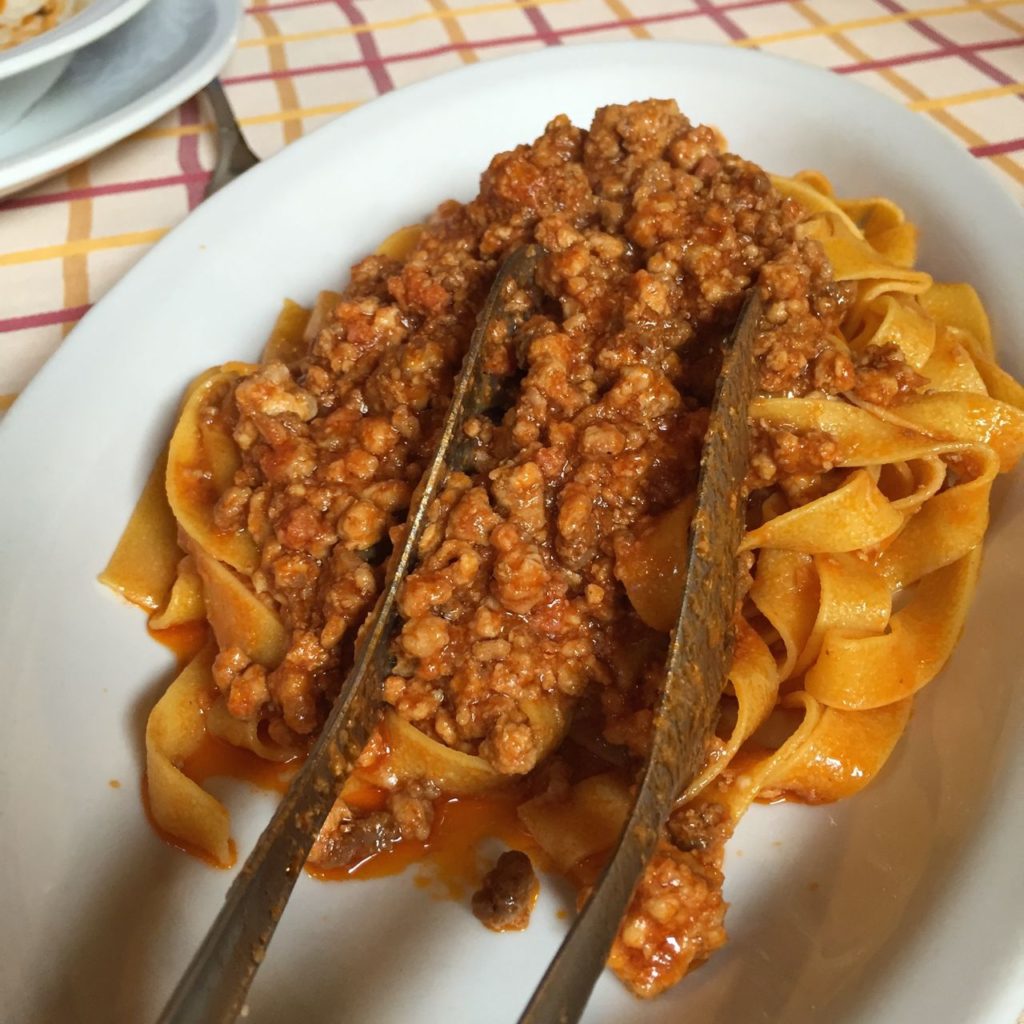
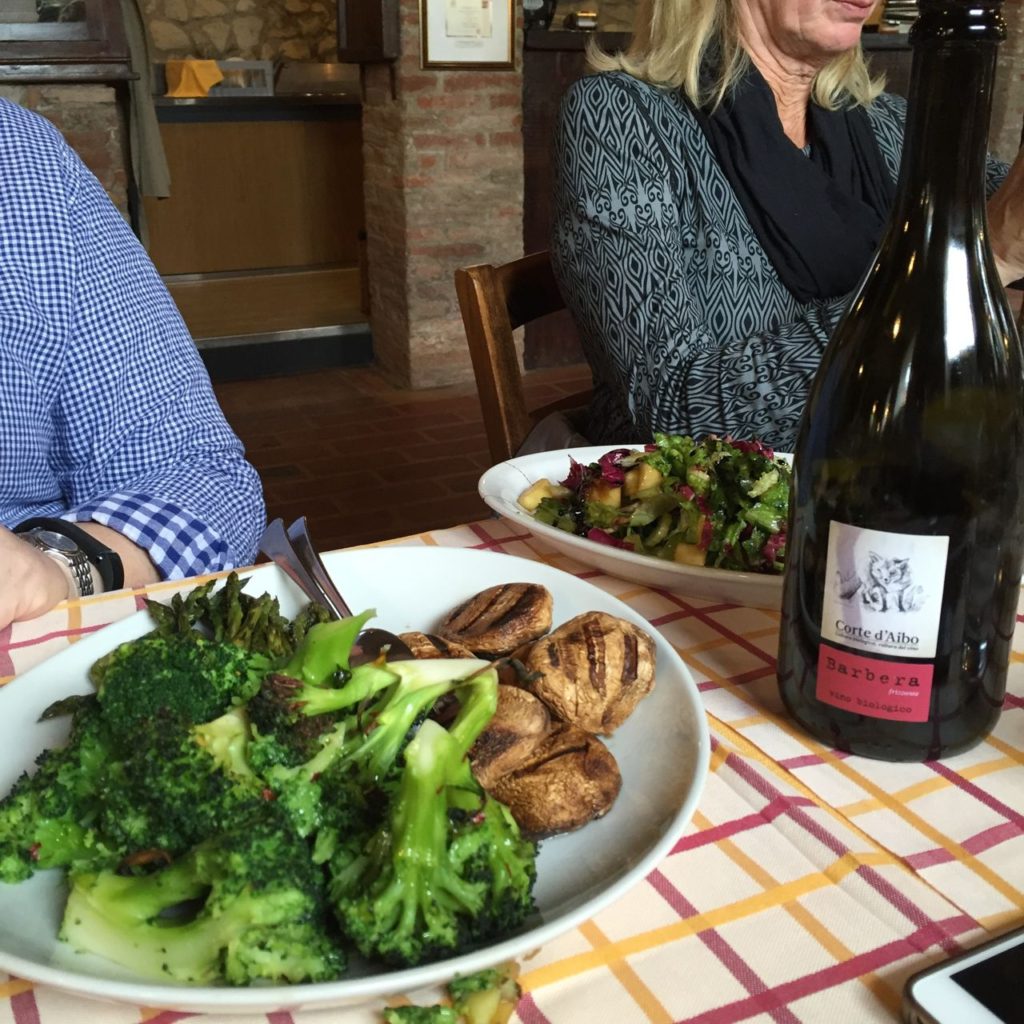
And then we went back to Bologna. Sadie and I talked all through the ride home and into the night–it was the first big food education I’ve had in a long time. And I think what struck us both were the subtle but strong shifts in how we viewed both these few foods by the end of the day, and all food as it related to the processes we had witnessed.
And then we set about trying to figure out how to fit 7 pounds of cheese in our bags. But that is a very different story.
For more information about all this deliciousness:
Italian Days Food Experiences
More about Parmigiano-Reggiano
Corte D’aibo

What an incredible experience! Thank you for taking the time to share it here.
Fantastic! Thanks for sharing. This is strengthening my resolve to get back to Italy one day and bring Danny with me. It is really the best food in the world.
Yes, yes! I want you to take this tour, too!
New follower, huge fan since buying your new cookbook! Love this post of your trip. Reminds me of my trip to Spain last spring when my daughter was studying abroad for the semester. We went on a vineyard tour and also ended up buying the most delicious balsamic syrup. Used the last of it up at Christmas…your daughter will remember this always.
Welcome, Maureen! I love your post especially because Sadie got excited about returning to Europe as a student, and I got excited about visiting her. And we haven’t broken into our balsamic yet….
It’s so funny that you mention Disney World! Just last week I was chatting with a mother whose daughter is in my daughter’s class, and in the course of the conversation she exclaimed with exasperation, “I hate all things Disney!” I laughed, and told her how when a neighbor asked me when we were taking our kids to Disney World, I said, “Oh, God, I hope never.” The other mother shared that her sister had taken a family trip to Disney, and it cost them a cool 10k. “That’s a trip to Europe!”, she concluded, and I agreed that was money better spent.
My poor, deprived children. *ahem*
Also, I can’t tell if your comment regarding “the kind of people who take food tours” is snark or not 🙂
10K! Italy is WAY LESS expensive! And… as someone who now seems to take food tours, I think I’ll keep that one mysterious 🙂
I’m stuffed now! No room for breakfast after reading this loveliness. It’s almostbutnotquite as good as being there with you.
There are places in the United States that produce food and are well-worth visiting. Awhile back, I saw a TV show about D’Artagnan, where they produce wonderful ducks and chickens. Thank you for taking us along on your tour!
Thank you so much for this.
I’m going to be in Bologna from June 20-22 and I was looking for something special to do. This all day tour fits the bill nicely. Especially since I don’t have to be in a group to join.
I’m already planning on bringing a big ball of aged Provolone back. I guess I’ll have to allow room for some Parmigiano-Reggiano and some Balsamic too.
Have already e-mailed them for reservations.
I’m so excited to start to finalize itineraries for my trip.
This is mostly an art trip for me but I’ll look through your blog for other suggestions for Italy.
Thanks again.
What a magical day! You’ve made it all so real for us and described everything so beautifully! Thanks for sharing this special experience with us!
Oh Italy. This is why everything tastes so good there. We like to joke that even convenience store pizza blew our minds in Italy.
It sounds like you had a fabulous day! I am very picky about taking tours too, but I find when in a foreign country those day trips tend to be one of my favorite days of the entire trip. I hope to get back to Italy one day and take a few factory tours myself. I’ll definitely be pinning this article for future reference.
Going on this tour today – your post inspired me and this has been on my To Do list for months. Can’t wait!
Oh, this makes me SO HAPPY! What did you think?